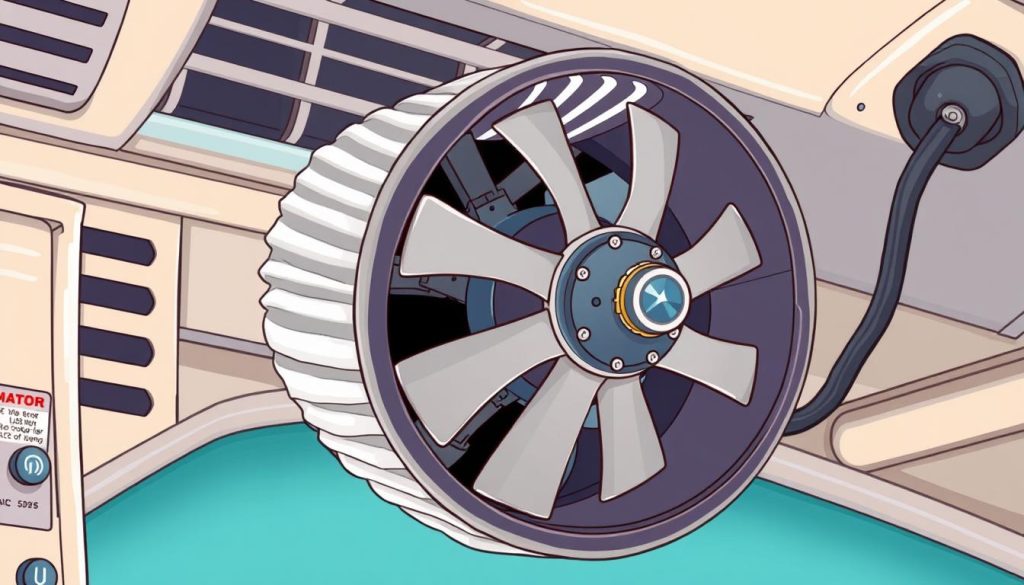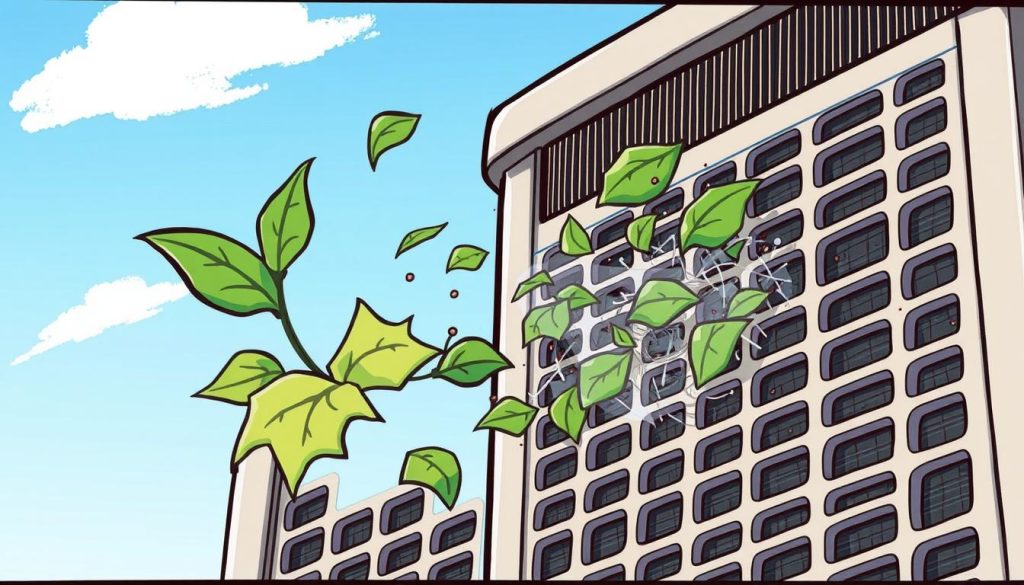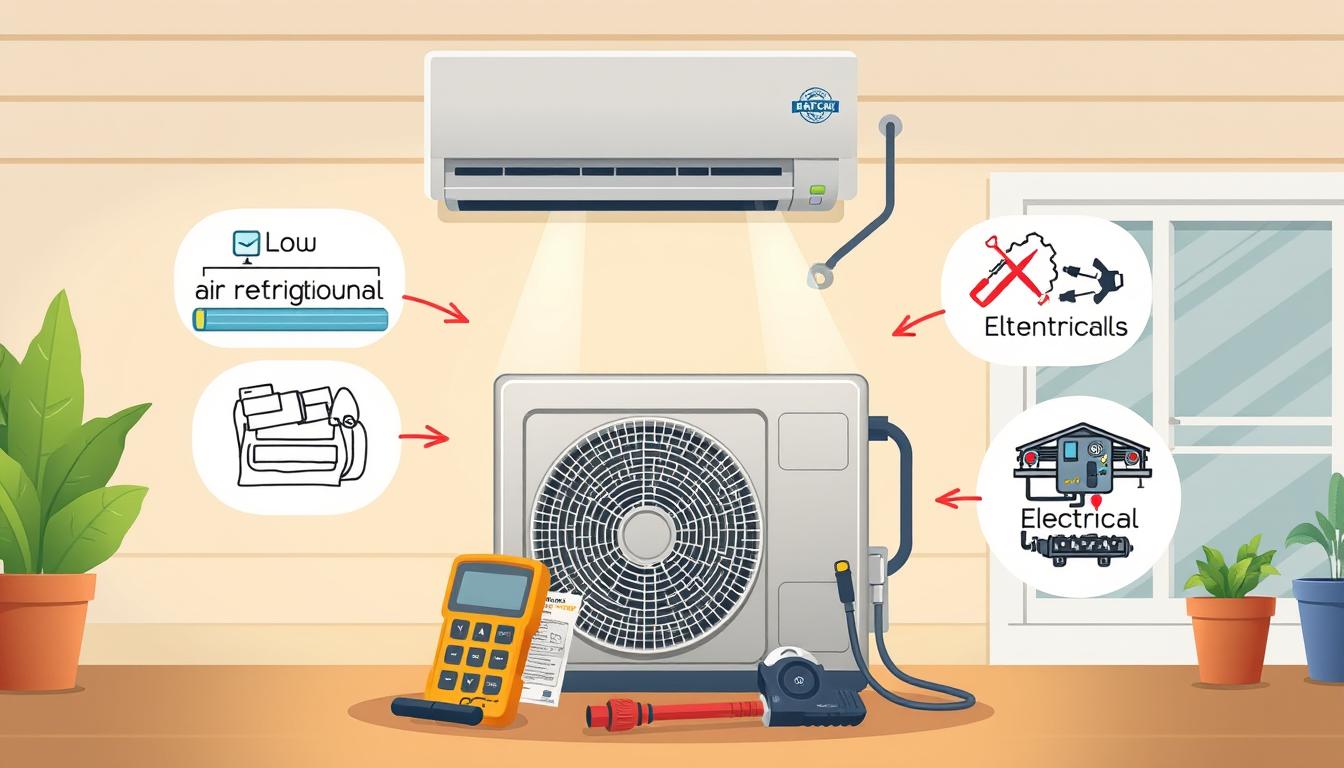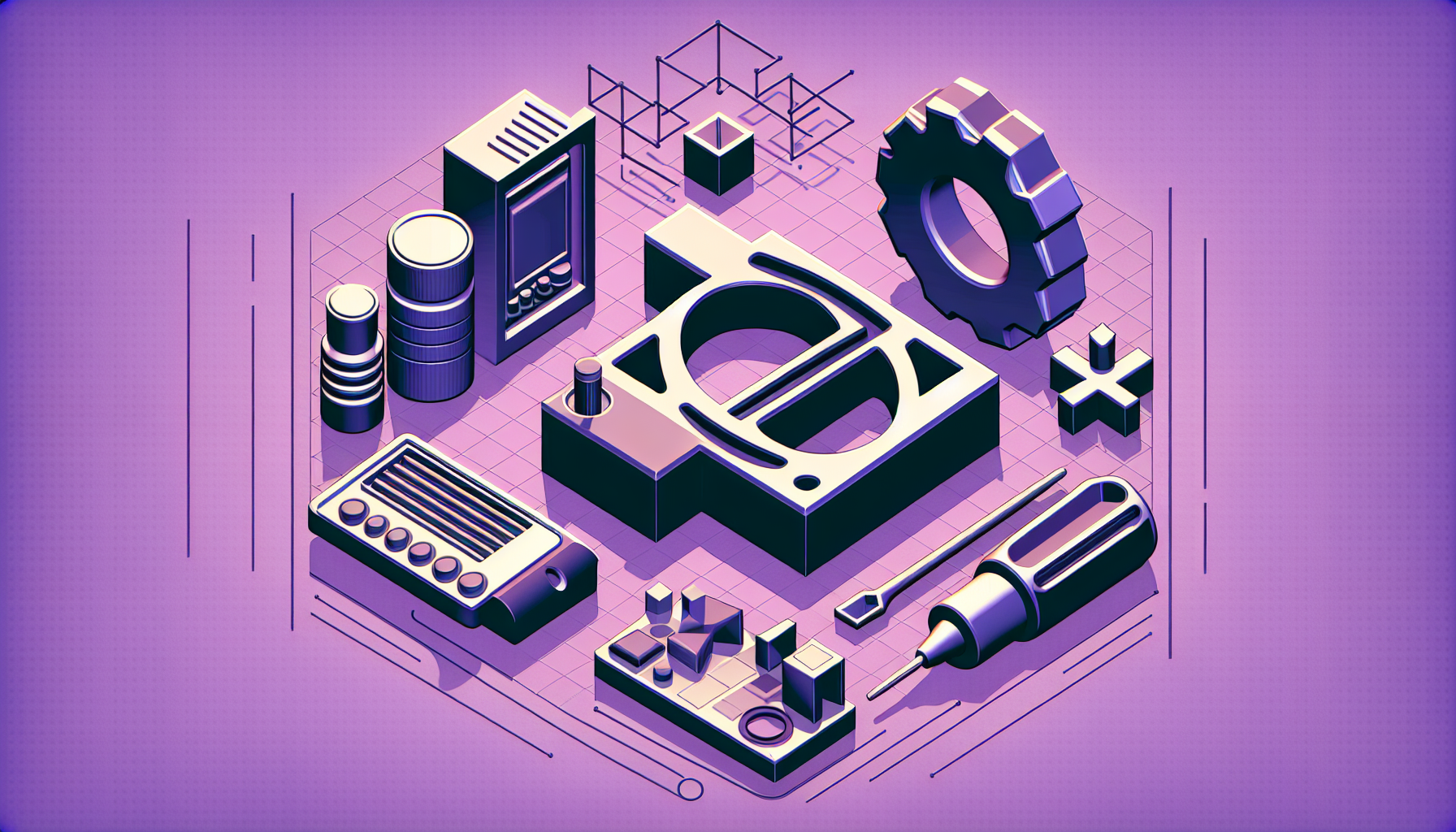If you own an air conditioning (AC) unit, you might have faced several issues. The most common problem is a bad capacitor. Capacitors are key for starting and running the compressor and blower motor. A failed capacitor can lead to problems like the unit not turning on or running without cooling.
Other common issues include low refrigerant, clogged drain lines, and failing motors. Thermostat problems and airflow issues also occur. Regular maintenance and troubleshooting can prevent these problems and keep your AC unit efficient.
Key Takeaways
- The most common problem in an AC unit is a bad capacitor, which can cause the unit to not turn on, short cycle, or run continuously without effectively cooling.
- Other frequent issues include low refrigerant levels, clogged condensate drain lines, failing blower motors, compressor or condenser fan motor failure, thermostat malfunctions, and airflow obstructions.
- Proper maintenance and troubleshooting can help prevent these common problems and keep your AC unit running efficiently.
- Regular inspections and maintaining components like filters, coils, and drain lines can help identify and address issues before they become larger problems.
- Addressing common AC unit problems promptly can help extend the lifespan of your cooling system and ensure it continues to provide reliable and efficient cooling.
The Most Frequent Issue: Bad Capacitor
A bad capacitor is often the main problem with air conditioning (AC) units. Capacitors help the electric motors in your AC system start and run well. But, they can weaken and fail, causing many issues.
Symptoms of a Bad Capacitor
Problems like the outside unit running but not turning on or strange noises can mean a bad capacitor. The capacitor gives the power needed to start the motors. Without it working right, your system won’t run as it should.
Causes and Solutions
Capacitors can get damaged by heat, moisture, and age. If you think your capacitor is bad, get a pro to check and replace it. Replacing a capacitor is usually cheap, costing $150 to $300, plus a check-up fee. Fixing a bad capacitor quickly can keep your AC working right and prevent bigger problems later.
| Symptom | Cause | Solution |
|---|---|---|
| Outside unit running but not turning on | Bad capacitor | Replace capacitor |
| Buzzing or humming noise from outside unit | Weak or failing capacitor | Replace capacitor |
Low Refrigerant Levels
Low refrigerant levels are a common problem with air conditioning (AC) units. Refrigerant is key for cooling your home. If it’s low, your AC won’t cool well, might freeze, and cool inefficiently.
A slow leak often causes low refrigerant. Without fixing the leak, the refrigerant keeps dropping. This makes your AC work harder and longer, raising your energy bills and risking damage.
What Causes Low Refrigerant Levels in an AC Unit?
Most low refrigerant comes from leaks in the AC system. Several things can cause these leaks, including:
- Wear and tear on refrigerant lines – Over time, lines can crack or hole up, letting refrigerant escape.
- Loose connections – If fittings and connections get loose, refrigerant leaks out.
- Damage to the coils – Damaged indoor and outdoor coils can also let refrigerant leak.
Signs of Low Refrigerant Levels
Low refrigerant levels can show in several ways, including:
- Reduced cooling capacity – Your home might not cool as it should, even with the AC on.
- Longer run times – The AC might need to run longer to keep your home cool.
- Increased energy bills – Low refrigerant makes your AC less efficient, raising your energy costs.
- Icing on the coils – Low refrigerant can freeze the indoor coils, reducing cooling even more.
Solving the Issue
If you think your AC has low refrigerant, get a pro to check it. They’ll find the leak and fix it, possibly by recharging the refrigerant. This can cost about $150 per pound, plus any fees for finding the problem.
Fixing low refrigerant quickly is key to keeping your AC running well. It ensures your home stays cool and energy-efficient all summer.
Clogged Condensate Drain Line
A clogged condensate drain line is a common problem in air conditioning (AC) units. Your AC cools the air and removes moisture, which must be drained outside. Over time, algae, debris, and other buildups can clog this line, causing issues.
Signs of a Clogged Drain Line
If your AC drain line is clogged, you might see a few signs. These include the AC safety switch tripping, the thermostat going blank, or water leaking from your unit. These problems happen when the clog stops the condensate from draining right, causing it to back up and leak out.
Clearing the Clog
Fixing a clogged condensate drain usually needs a pro HVAC technician. They use tools like compressed air to clear the blockage. The cost can be between $150 to $200, plus any extra fees for checking the problem.
It’s best to let experts handle this to ensure it’s fixed right and safely. Fixing a clogged AC drain line quickly stops more damage and avoids AC water leaks. Regular checks and maintenance can help you avoid this common AC problem.
Failing Blower Motor
A failing blower motor is a common problem with air conditioning (AC) units. The blower motor circulates air through the ductwork. Its failure can cause big problems with your AC system’s performance.
Signs of a failing blower motor include an electrical burning smell, grinding or banging noises, and a lack of airflow. These issues can be due to worn bearings, dirt and debris buildup, or a failing start capacitor.
Why is the Blower Motor so Important?
The blower motor is key to your AC system. It moves air through the ductwork and into your living spaces. Without a working blower motor, your AC unit can’t cool your home properly. This leads to discomfort and higher energy bills.
Signs of a Failing Blower Motor
- AC making strange noises: Grinding, banging, or other unusual sounds from your AC unit might mean a problem with the blower motor.
- AC not blowing air: A big drop in airflow or no air at all usually means the blower motor has failed or is failing.
- AC electrical burning smell: An electrical burning odor can signal a problem with the blower motor, like a short circuit or other electrical issue.
Replacing the Blower Motor
If you think your AC unit’s blower motor is failing, get it checked and replaced quickly. Replacing a blower motor costs $800-$900, plus any extra diagnostic charges. Waiting too long can damage your AC system more, so fix it fast.

| Symptom | Potential Cause | Solution |
|---|---|---|
| AC making strange noises | Worn bearings, debris buildup | Replace blower motor |
| AC not blowing air | Blower motor failure | Replace blower motor |
| AC electrical burning smell | Electrical issue, short circuit | Replace blower motor |
What is the most common problem in an AC unit?
The most common AC problem is often a bad capacitor. This small part is key to powering your AC’s compressor and fan motors. If it fails, you’ll face many issues. Other common problems include low refrigerant, clogged drain lines, blower motor failures, and fan motor malfunctions.
Regular maintenance can prevent many of these issues. Changing air filters and getting professional tune-ups are crucial. By keeping an eye on your system and fixing problems quickly, your AC will run smoothly. This keeps your home cool and comfortable all summer.
Common AC Troubleshooting and Repair Diagnoses
- Bad Capacitor: A faulty capacitor can cause the compressor or fan motors to malfunction, leading to poor cooling performance or a complete system shutdown.
- Low Refrigerant Levels: Leaks in the refrigerant lines can result in insufficient cooling power and reduced efficiency.
- Clogged Condensate Drain Line: A blocked drain line can lead to water backup and potential water damage in your home.
- Blower Motor Failure: A malfunctioning blower motor can prevent proper air circulation, compromising your AC’s effectiveness.
- Compressor or Condenser Fan Motor Issues: Problems with these critical components can cause your AC to shut down or perform poorly.
Maintaining Your AC Unit
To keep your AC unit in top shape, follow a regular maintenance checklist. This includes changing air filters, clearing the condensate drain line, and scheduling professional tune-ups. By doing this, you can avoid common problems and keep your home cool and comfortable all season.
| Common AC Problem | Symptoms | Potential Causes | Solutions |
|---|---|---|---|
| Bad Capacitor | – AC won’t turn on – Compressor or fan not running |
– Capacitor failure – Worn-out capacitor |
– Replace the capacitor |
| Low Refrigerant Levels | – Warm air coming from vents – System not cooling effectively |
– Refrigerant leak – Improper refrigerant charge |
– Locate and repair leak – Recharge the refrigerant |
| Clogged Condensate Drain Line | – Water leaking or pooling – Musty odor |
– Dirt, debris, or algae buildup | – Clear the drain line – Install a condensate pump |
Compressor or Condenser Fan Motor Failure
AC units often face issues with the compressor or condenser fan motor. These parts can have problems like short circuits, open windings, or bearing issues. Such failures can cause the circuit breaker to trip, make strange noises, or prevent the system from turning on.
Fixing a bad compressor can cost between $1,200 to $1,500. A new condenser fan motor might cost $700 to $900, plus service fees. It’s crucial to know the signs of these failures and act quickly to fix them.
What are the symptoms of a failing AC compressor or condenser fan motor?
- The circuit breaker trips often when the AC is turned on.
- The system won’t start or run, even when the thermostat is set low.
- Unusual noises, like grinding, humming, or buzzing, come from the outdoor unit.
- The outdoor unit doesn’t spin or spins erratically.
What causes an AC compressor or condenser fan motor to fail?
- Electrical issues: Wiring problems, voltage changes, or a bad capacitor can burn out the motor.
- Mechanical wear and tear: Bearings in the motor can wear down over time, causing it to seize or run poorly.
- Overload and overheating: Running the AC too much or in extreme temperatures can overload and overheat the compressor or fan motor, causing it to fail.
If you think your AC’s compressor or condenser fan motor is having trouble, get a professional HVAC technician to check it. Ignoring these issues can lead to more damage and expensive repairs later.
| AC Component | Average Replacement Cost |
|---|---|
| Compressor | $1,200 – $1,500 |
| Condenser Fan Motor | $700 – $900 |
Thermostat Malfunctions
Thermostat malfunctions are common in air conditioning (AC) systems. The thermostat controls the temperature. Problems with it can cause your AC to run constantly, not turn on, or not match the temperature setting.
Signs of Thermostat Issues
Here are signs your thermostat might be having trouble:
- AC constantly running: If your AC runs all the time, even when it’s already cool, it might be a thermostat issue.
- AC not turning on: If your AC doesn’t change when you adjust the thermostat, it could be a thermostat problem.
- Temperature discrepancy: If the thermostat shows a different temperature than the room, it might need to be fixed or replaced.
Potential Solutions
Here are some ways to fix AC thermostat problems or AC thermostat not working:
- Thermostat recalibration: Sometimes, just calibrating the thermostat can fix it.
- Thermostat replacement: If your thermostat is old or broken, you might need a new one to solve AC temperature issues or AC constantly running problems.
- Professional diagnosis: It’s wise to have a pro HVAC technician check your thermostat and AC system for any hidden problems.
Fixing thermostat problems is key to keeping your AC working well. Knowing the signs and fixing them can help your AC system run smoothly. This keeps your home comfortable all year.
Airflow Obstructions
Many people overlook airflow issues with their AC units. Dirty air filters, blocked vents, and debris can all hinder airflow. This makes your AC work harder, leading to various problems.
Why Airflow Matters for Your AC
Good airflow is key for your AC’s efficiency. If airflow is blocked, your AC has to strain to cool your home. This can cause several issues:
- AC Overheating: Blocked airflow can overheat the AC’s compressor and other parts. This might lead to costly repairs or even a breakdown.
- Frozen Coils: Not enough airflow can freeze the evaporator coils. This reduces your AC’s cooling power.
- Reduced Efficiency: Dirty filters and blocked vents make your AC work harder. This increases your energy bills and lowers efficiency.
Identifying and Resolving Airflow Obstructions
To keep your AC running well, check for and fix airflow blockages regularly:
- Change Air Filters Regularly: Dirty filters block airflow. Replace them every 1-3 months, based on usage and environment.
- Clear Blocked Vents and Registers: Ensure all vents and registers are clear of furniture, curtains, or other items.
- Remove Debris Buildup: Dust and dirt can block airflow in your AC over time. Regular maintenance keeps it clean and efficient.
Fixing these common airflow issues helps your AC run smoothly. This keeps your home cool and comfortable all year.

Conclusion
Common AC unit problems include issues with the capacitor, refrigerant levels, and condensate drain lines. Other issues are with blower motors, compressor or condenser fan motors, thermostats, and airflow obstructions. Knowing these problems helps you fix your cooling system.
Keeping your AC unit well-maintained is key. Regular filter changes, coil cleaning, and professional tune-ups prevent many issues. Fixing problems quickly can also save you money on repairs later. If you’re unsure, a qualified HVAC technician can help diagnose and fix any issues.
With the right knowledge and proactive steps, your AC unit will run efficiently. Stay informed and watch for problems to enjoy a cool, energy-efficient home all season.





0 Comments